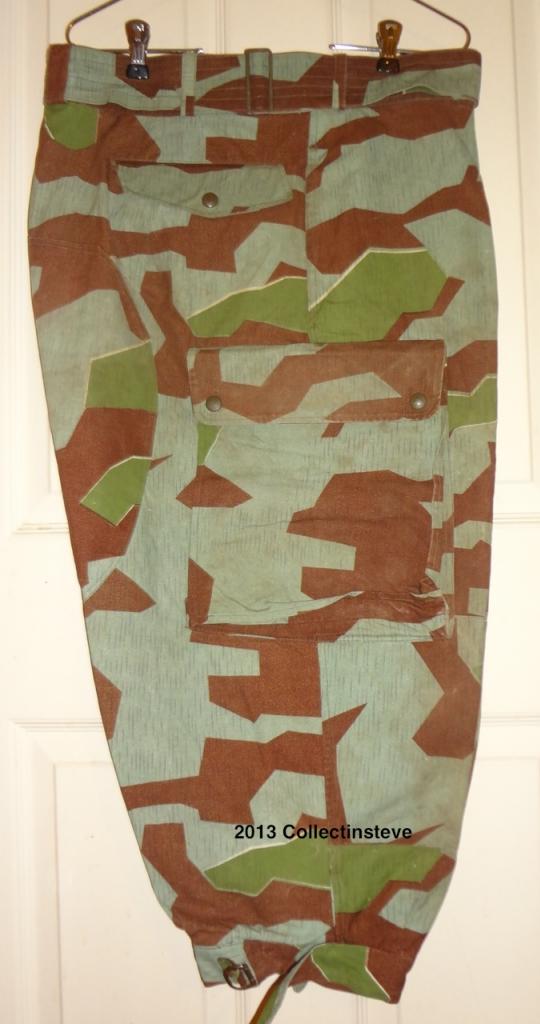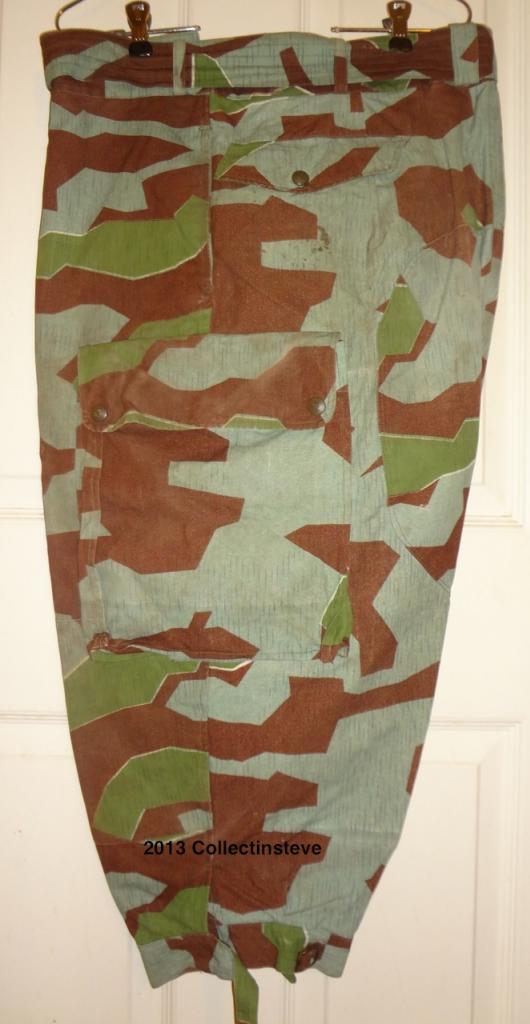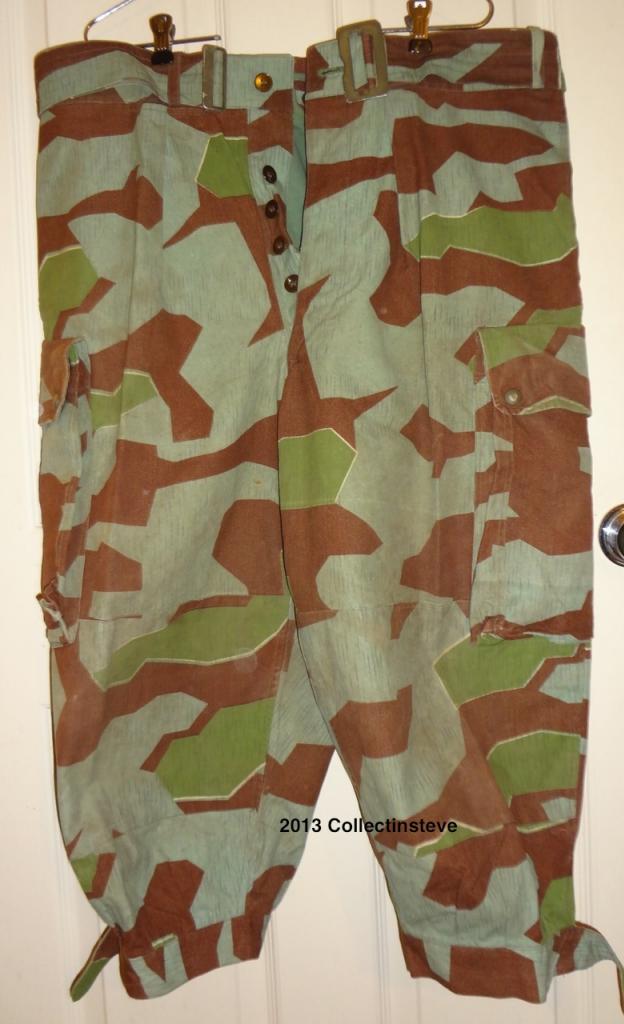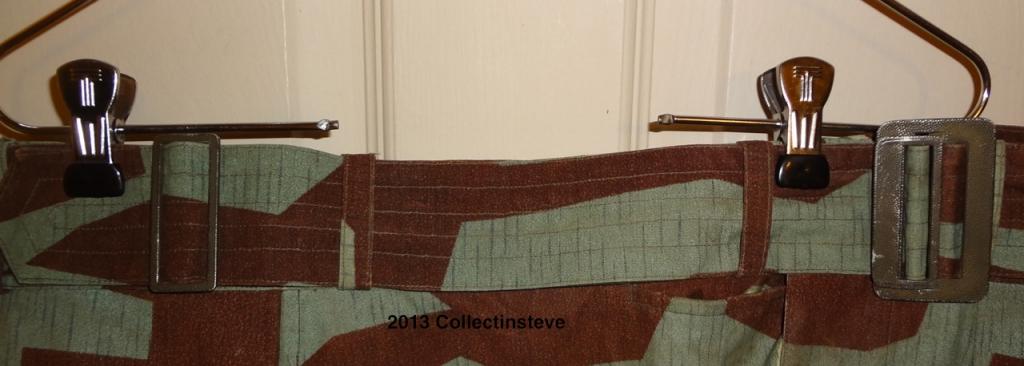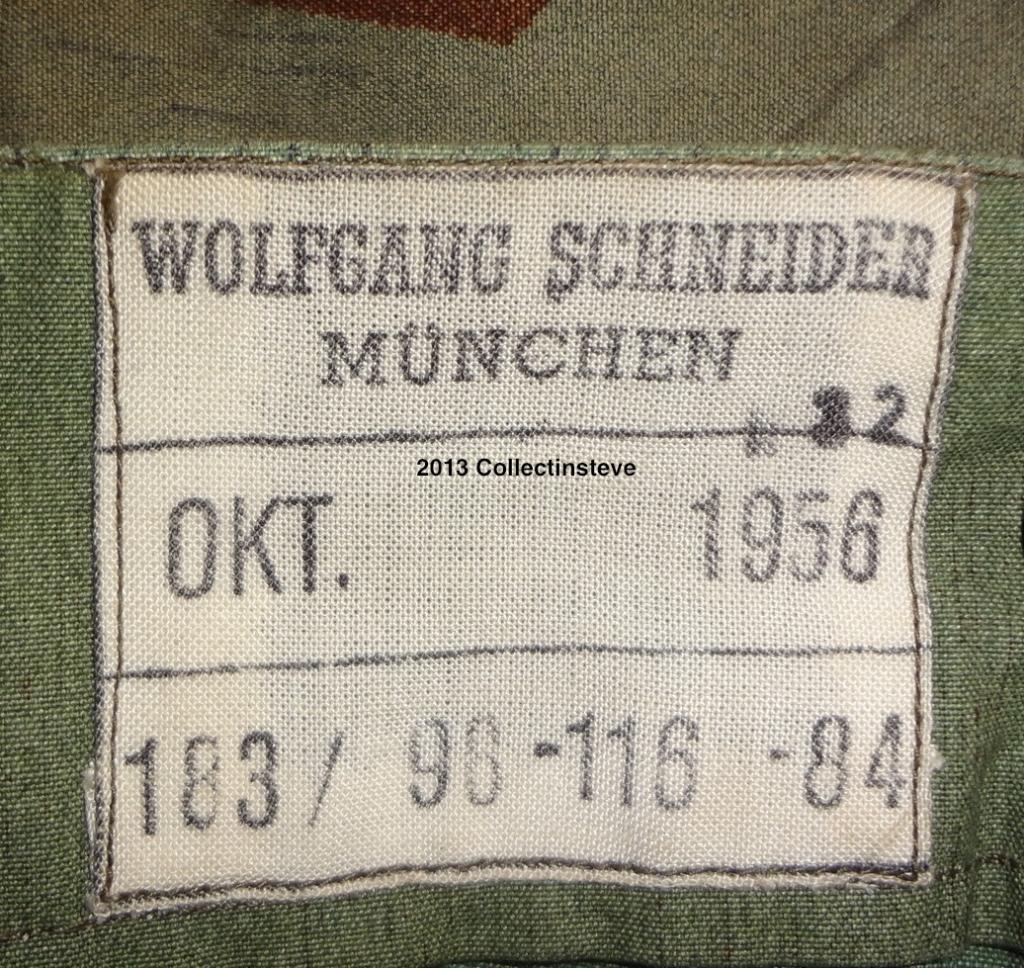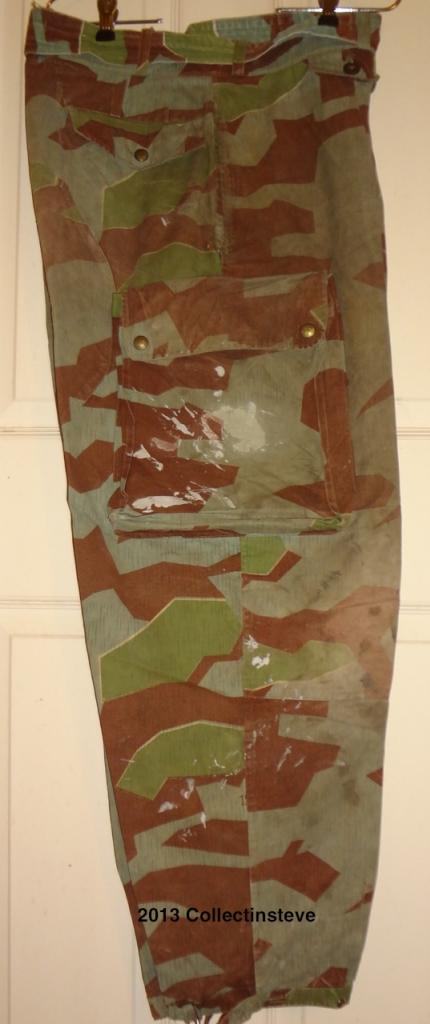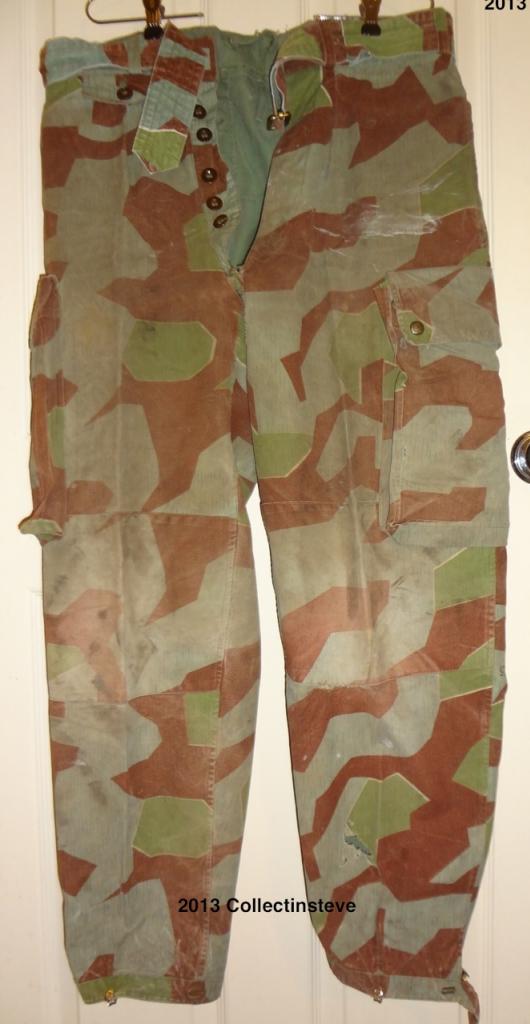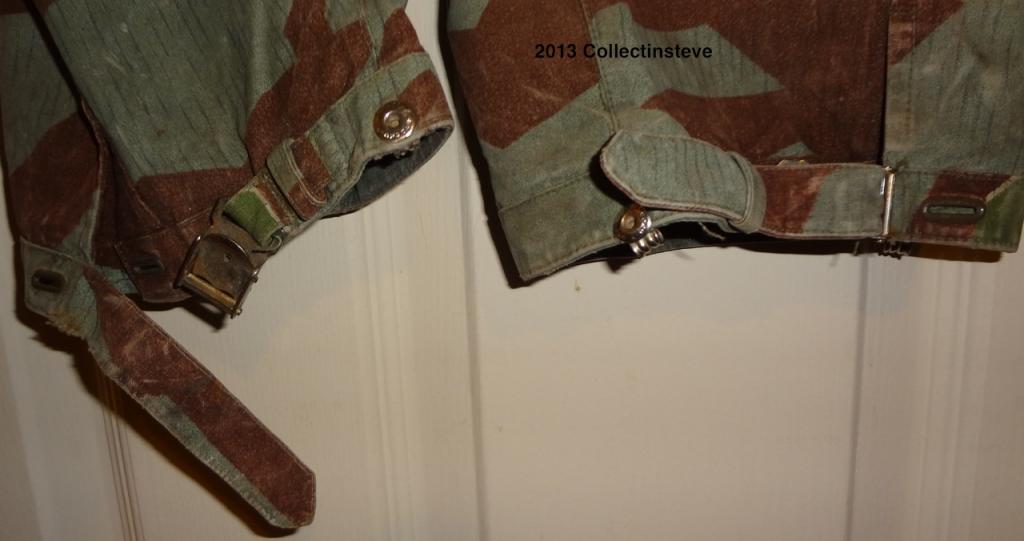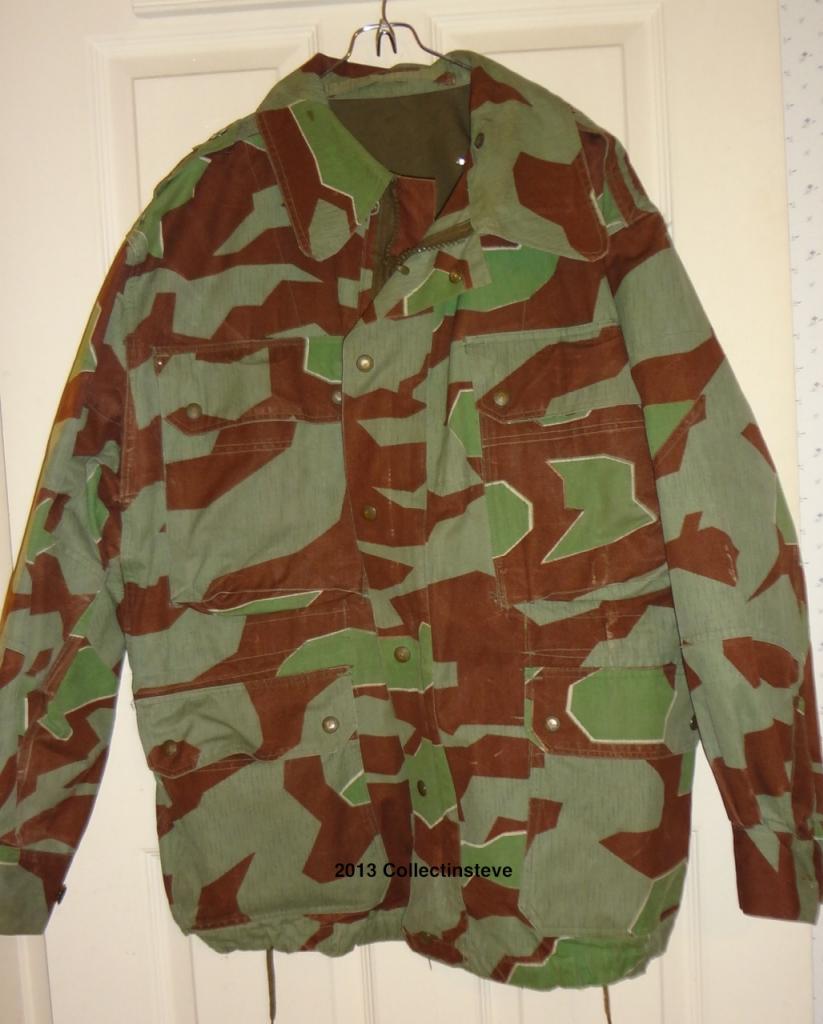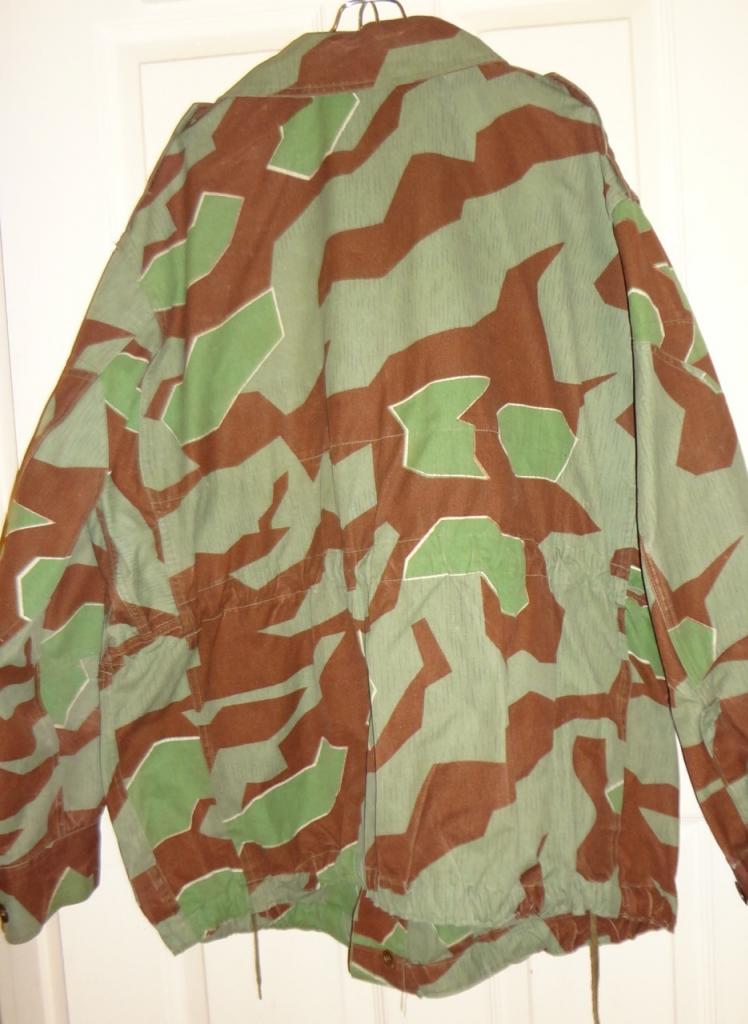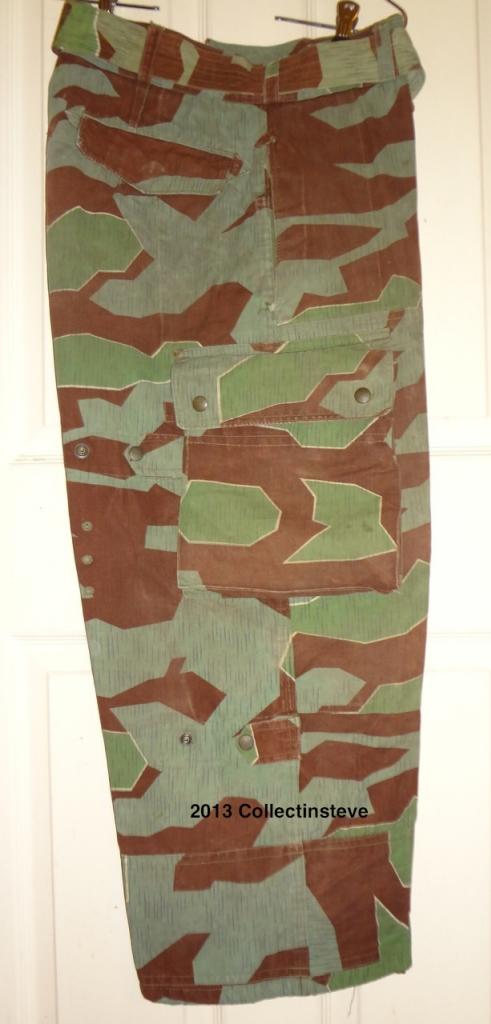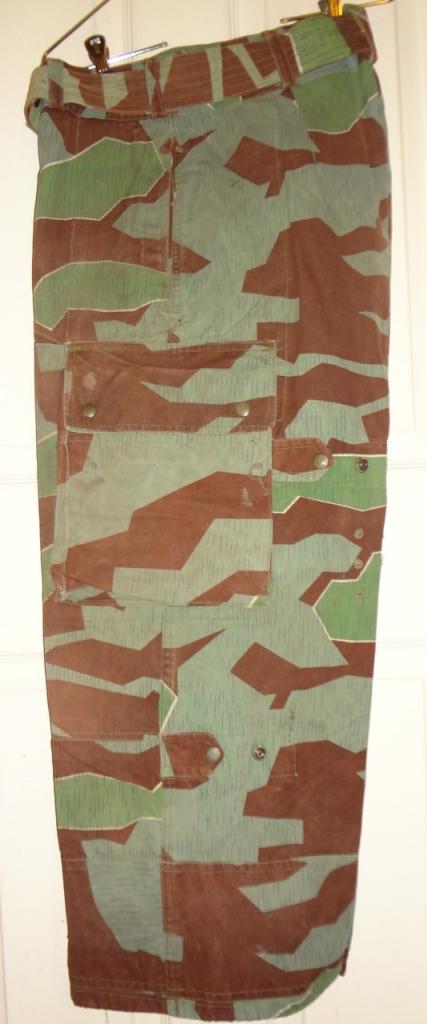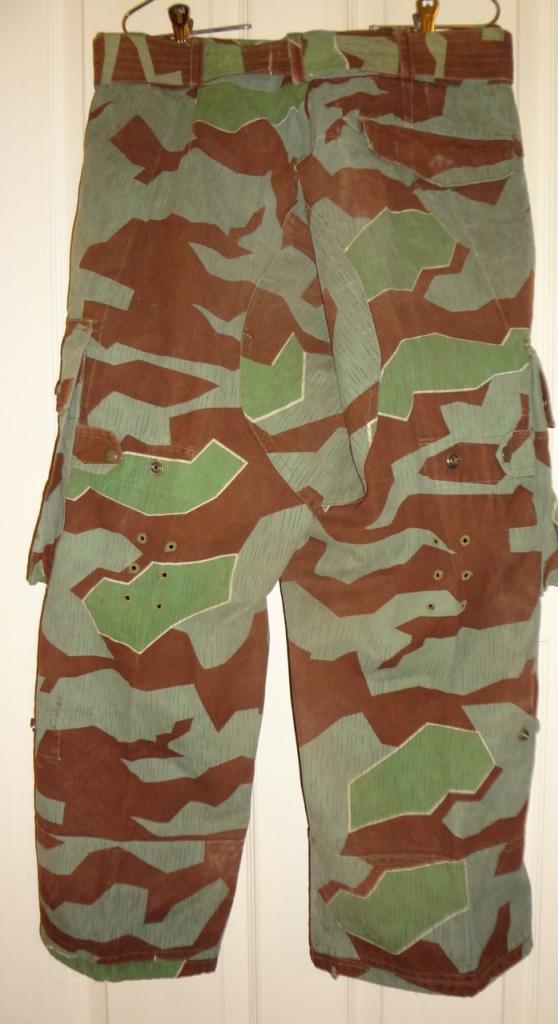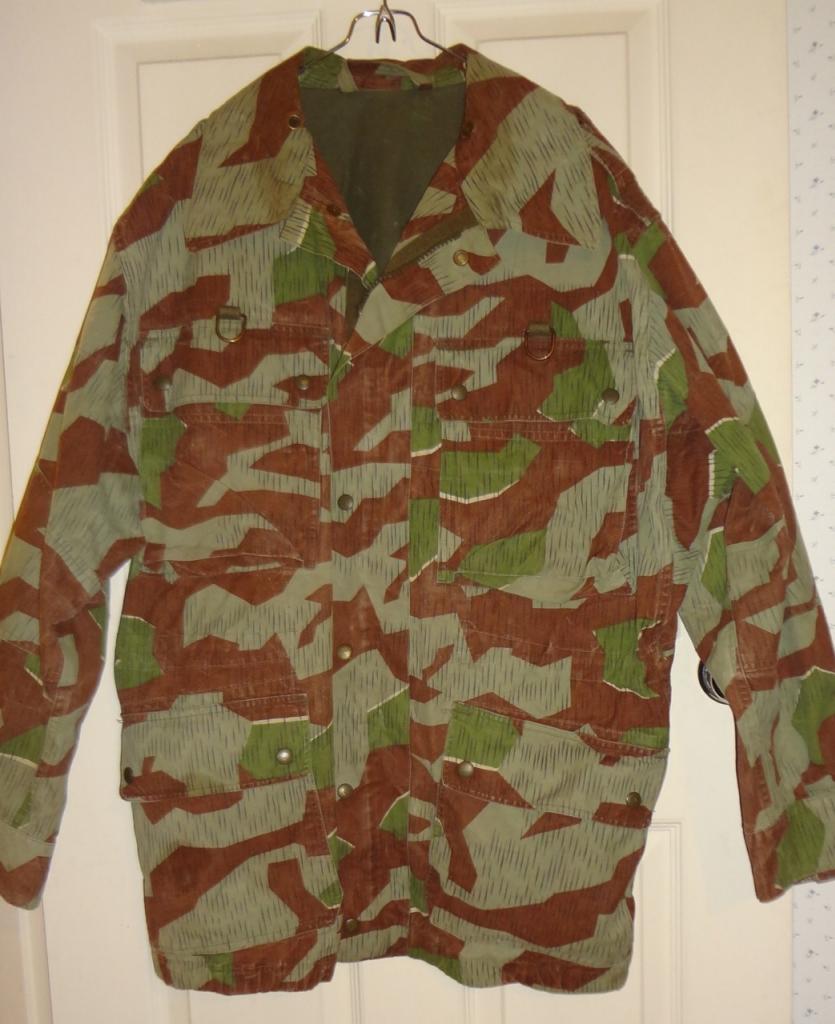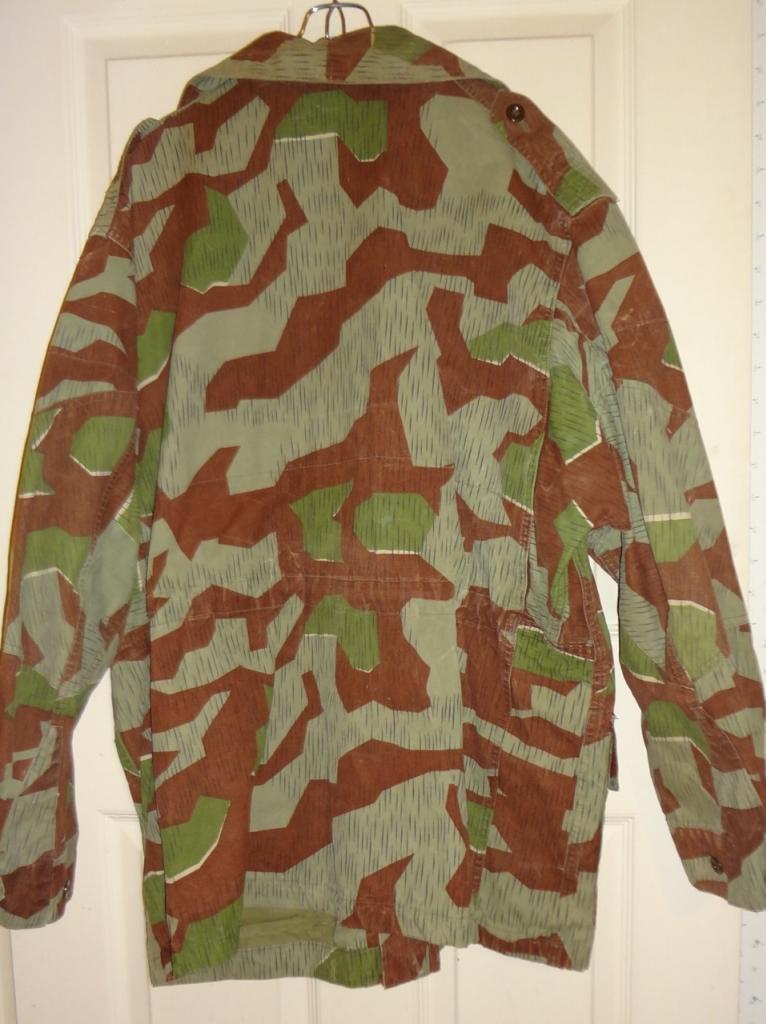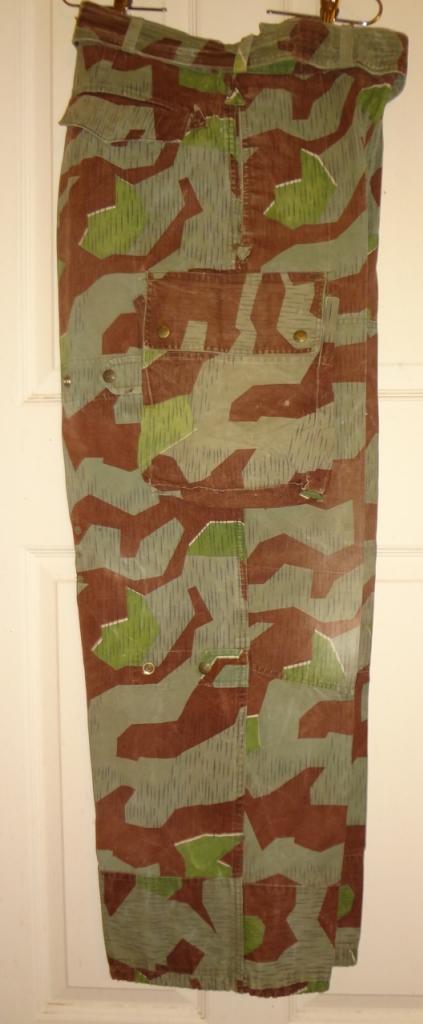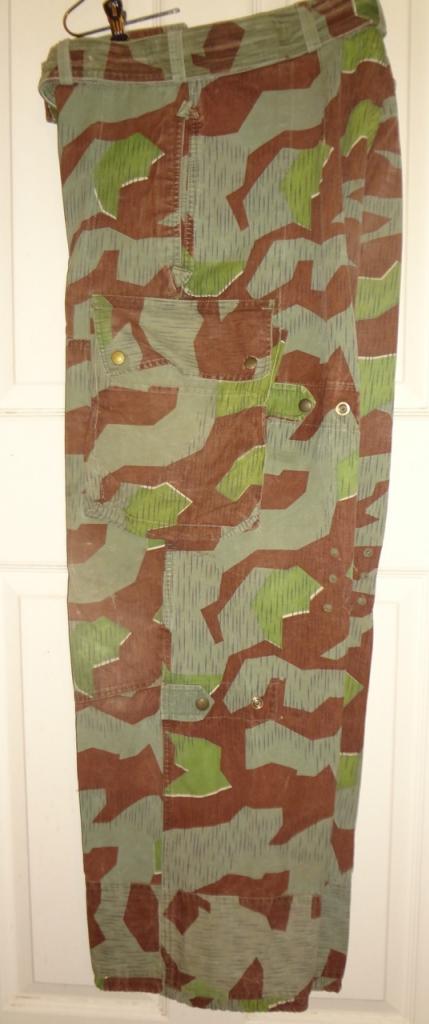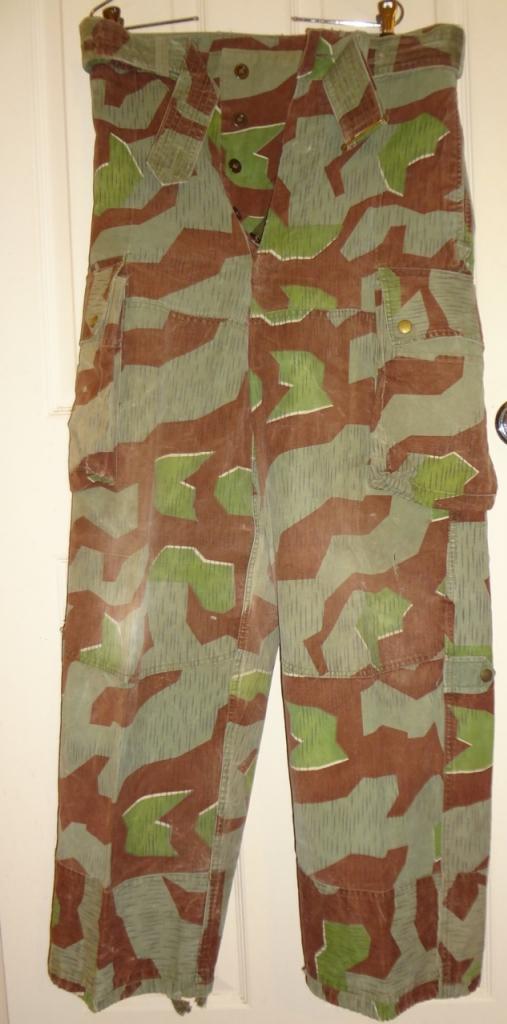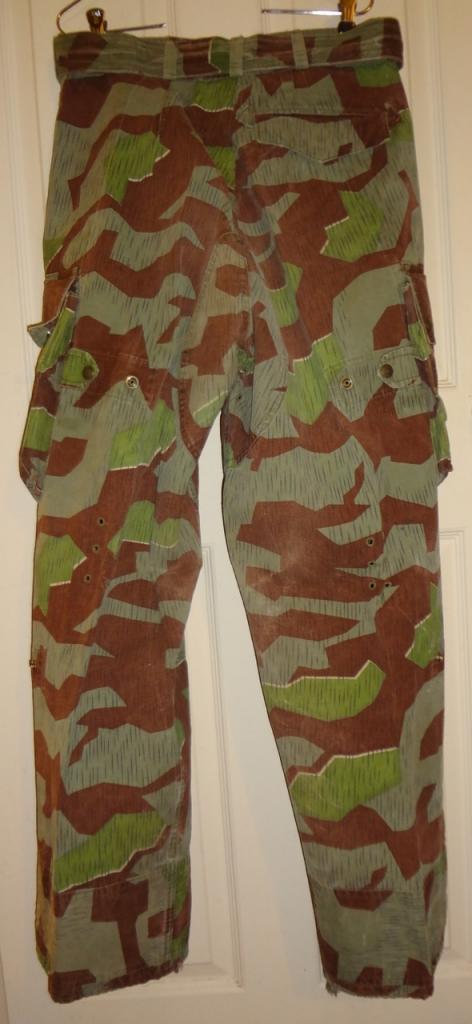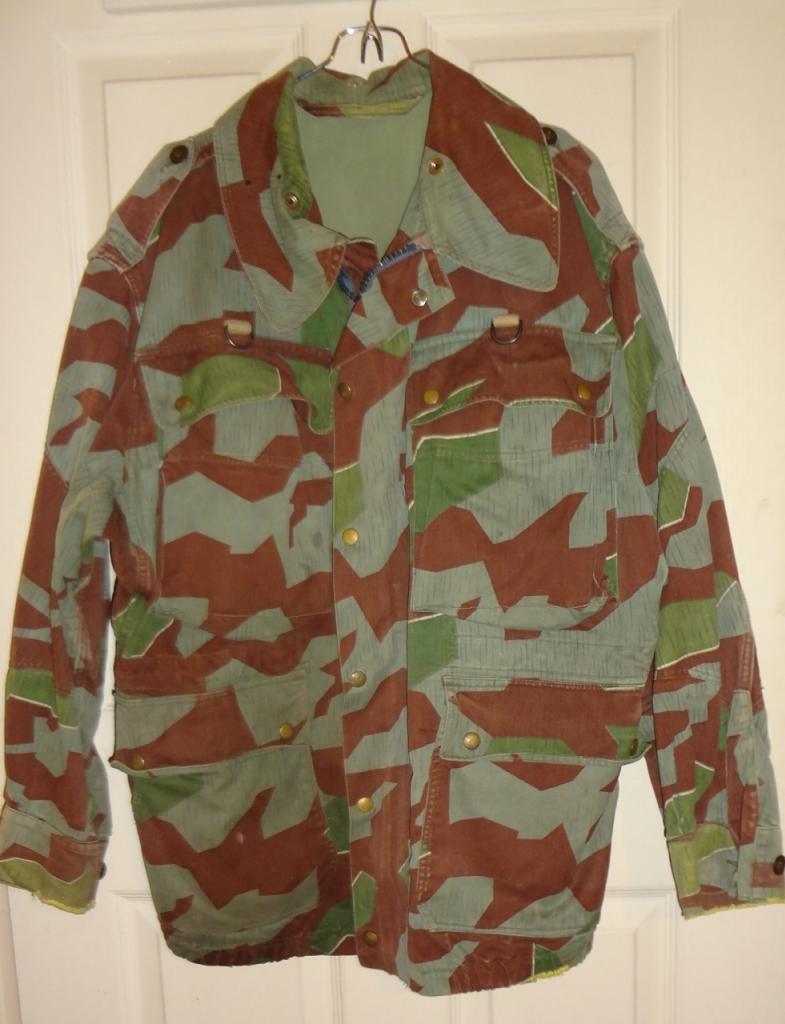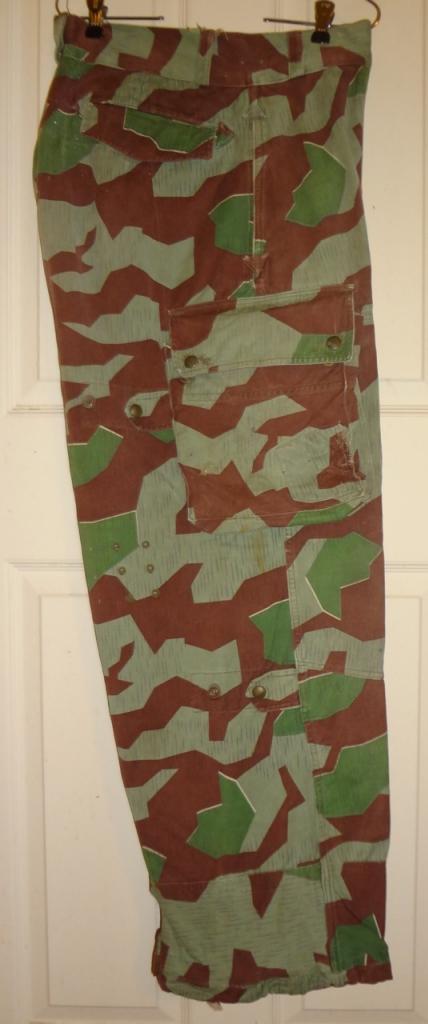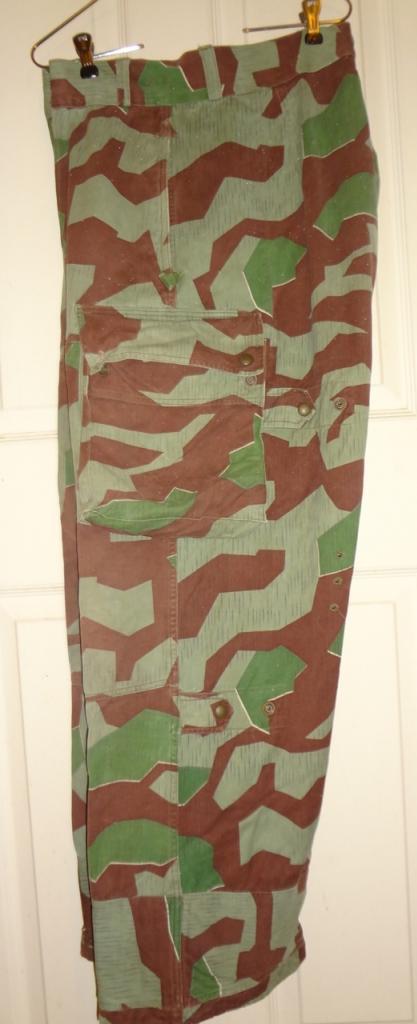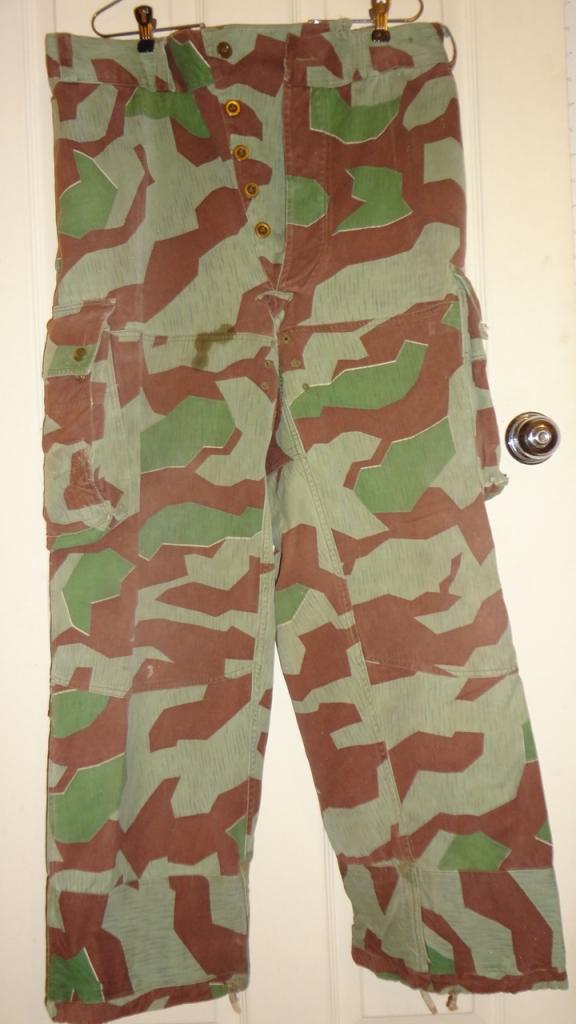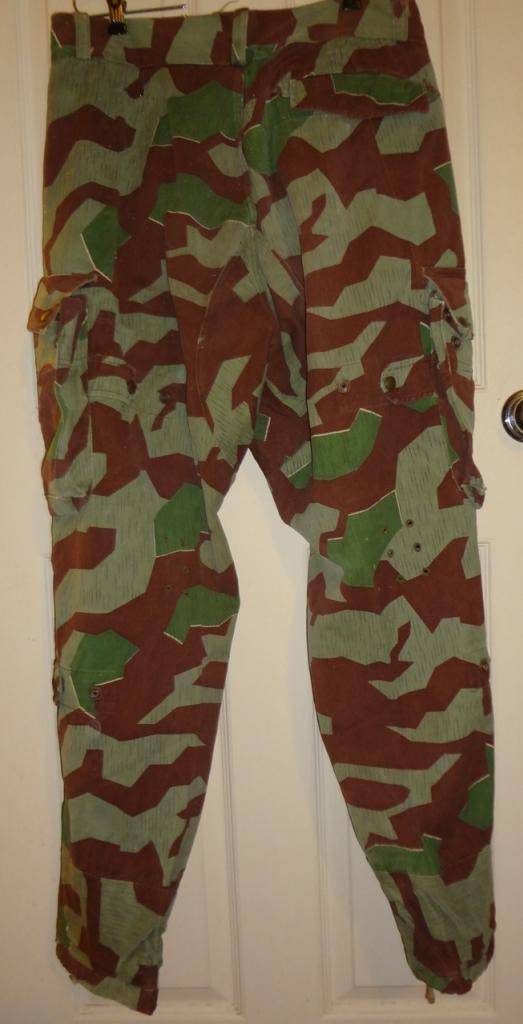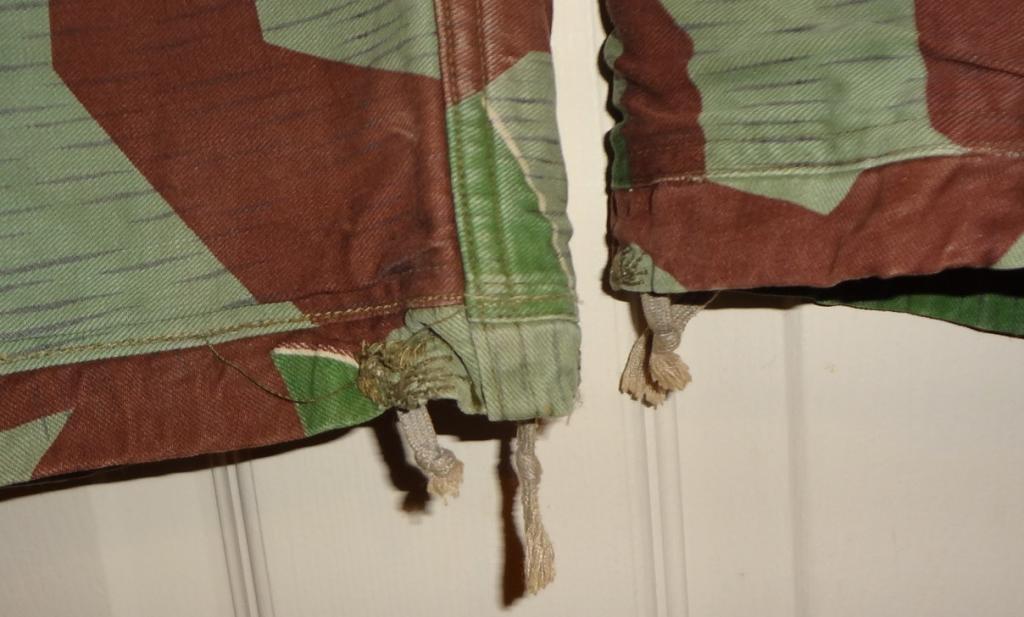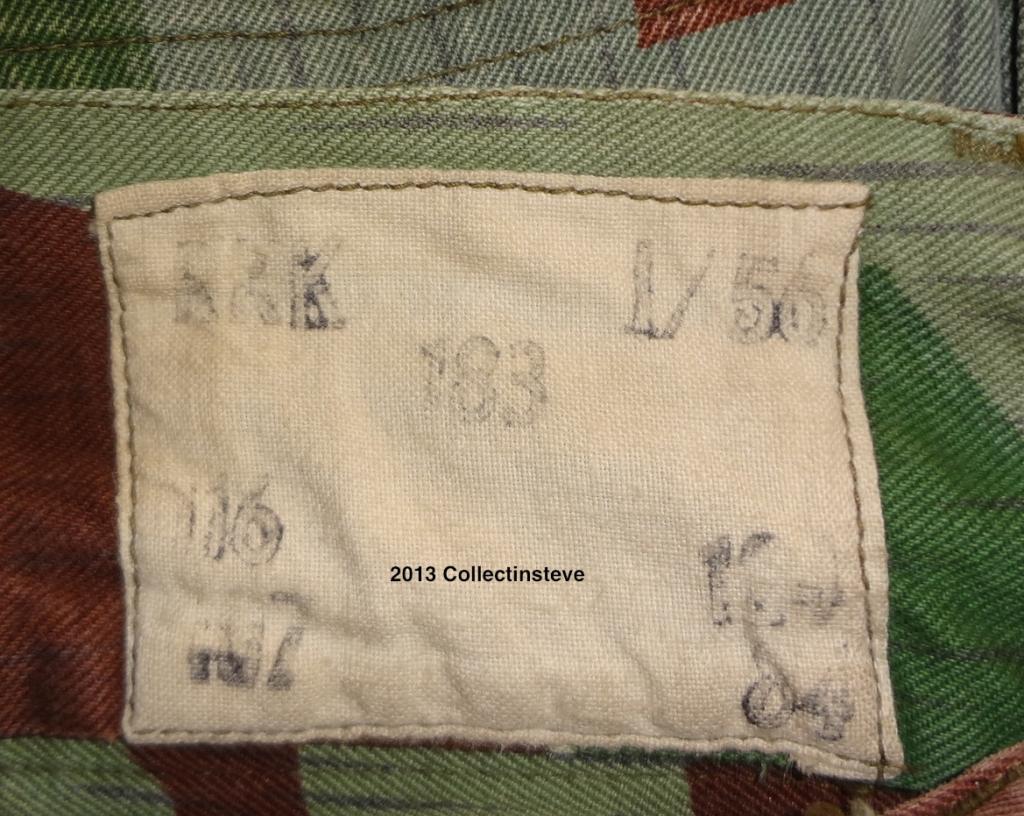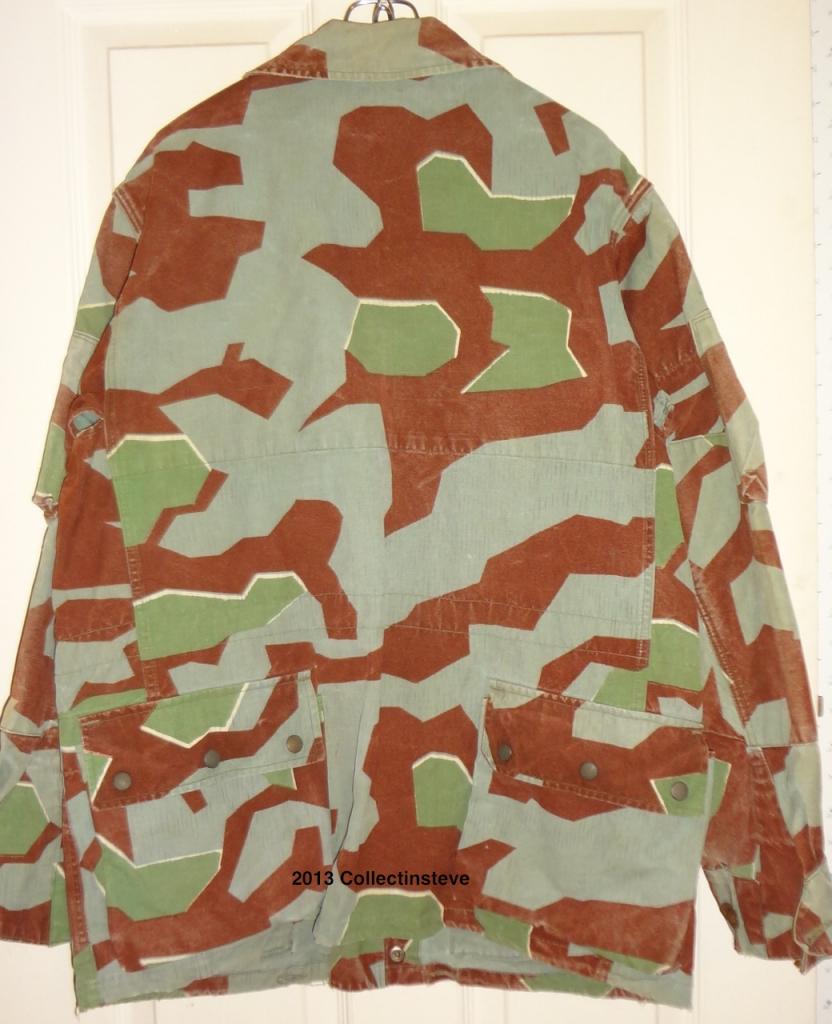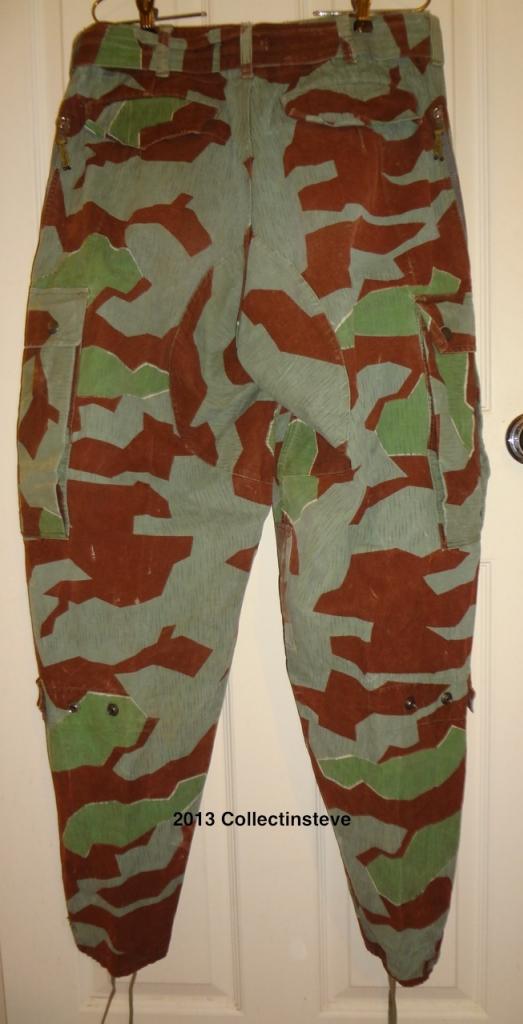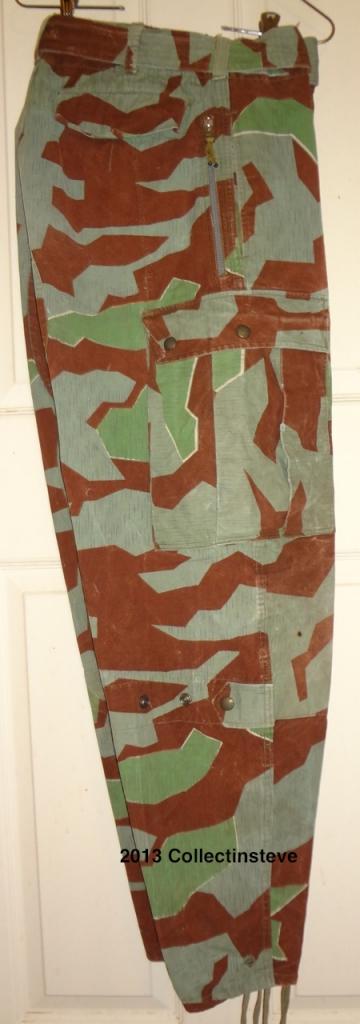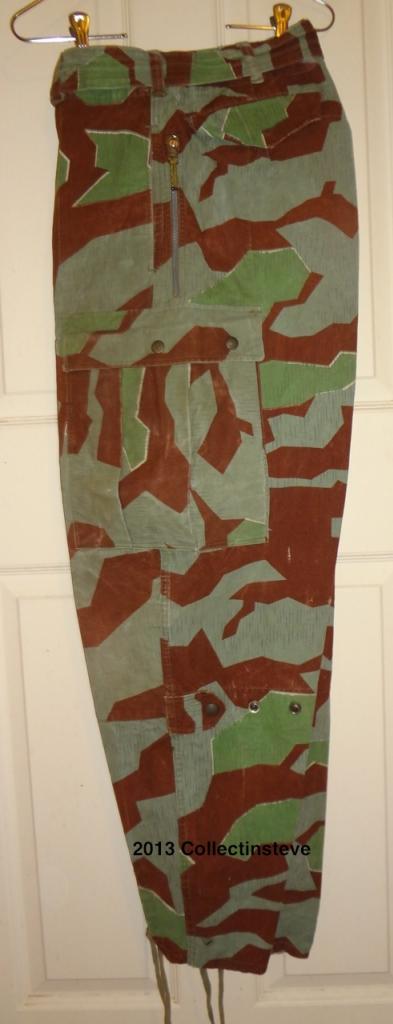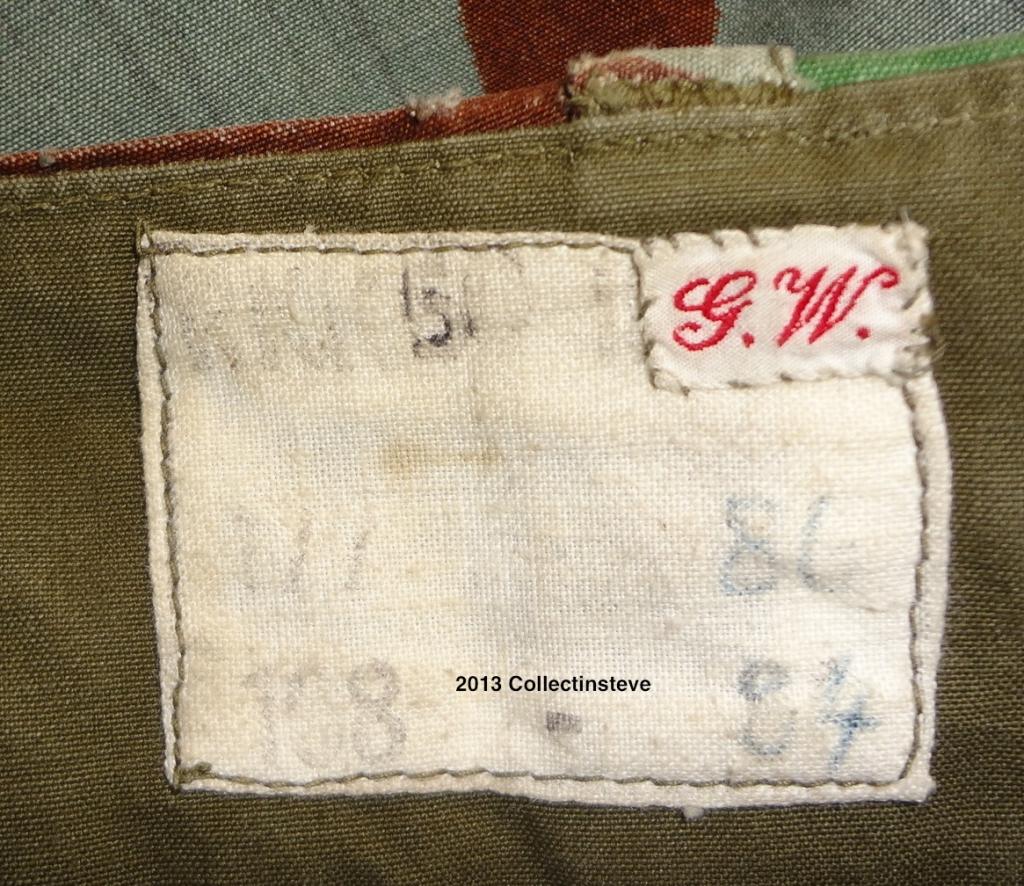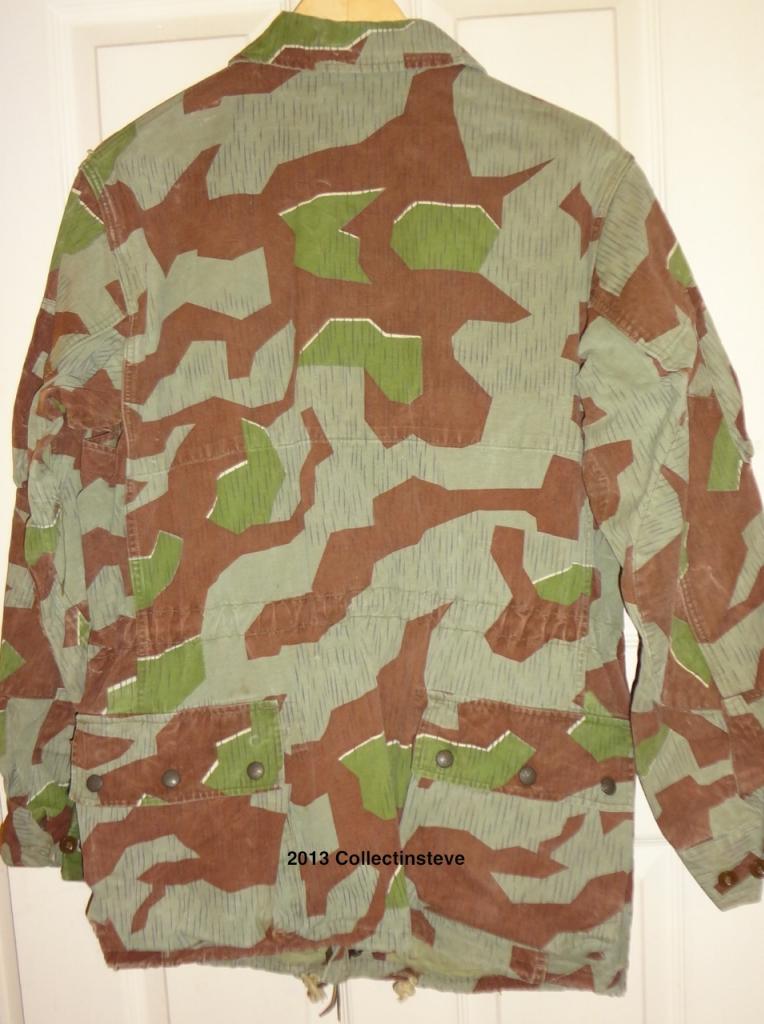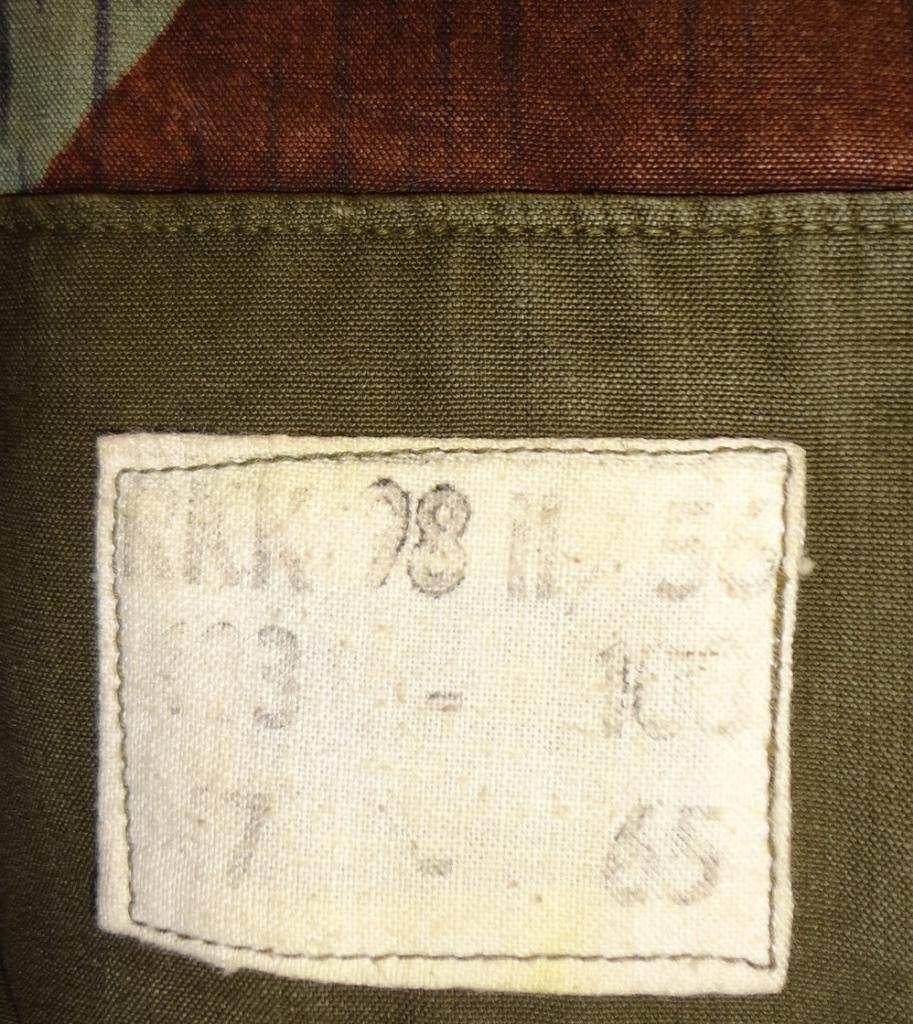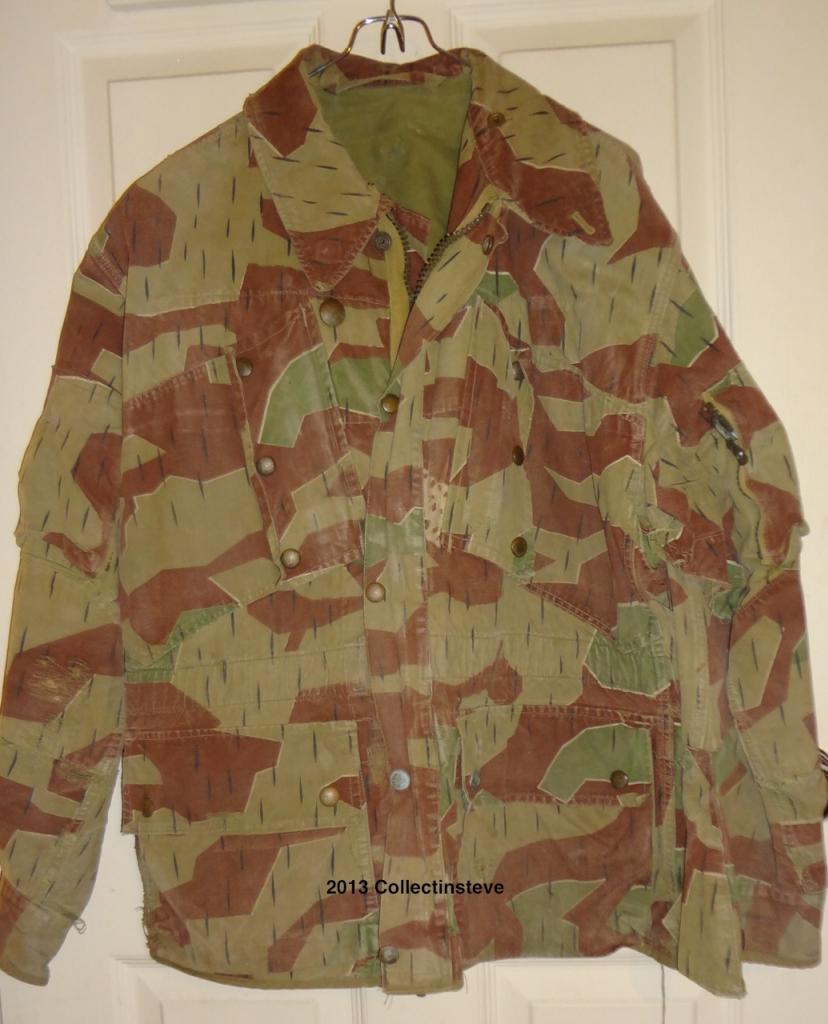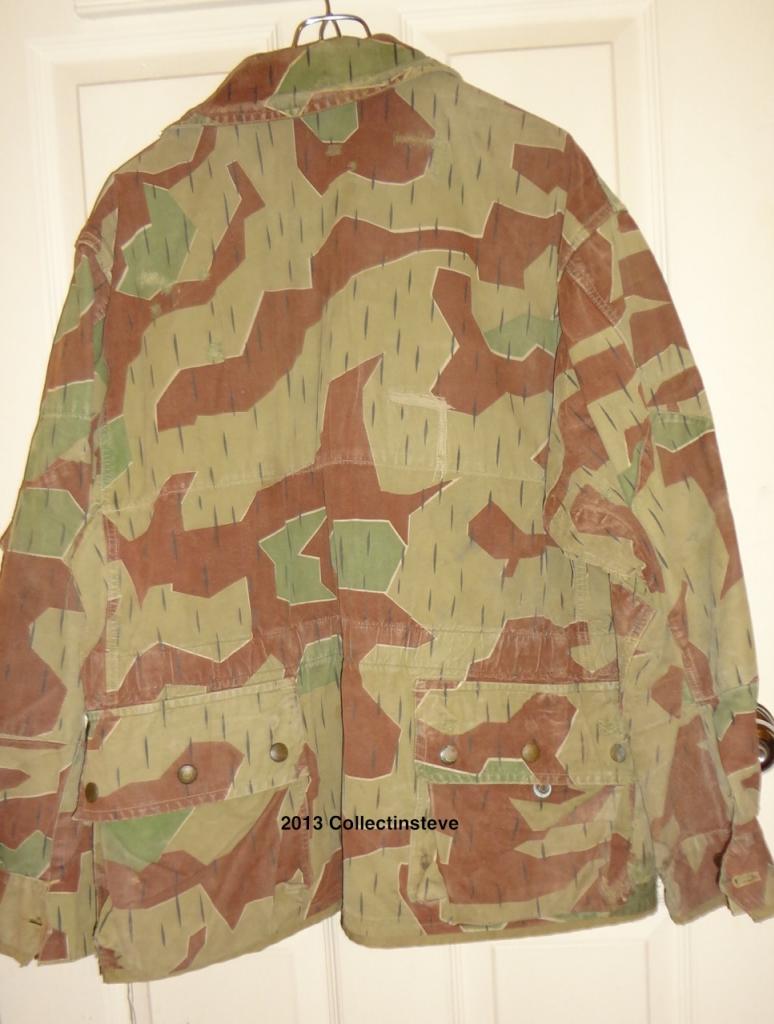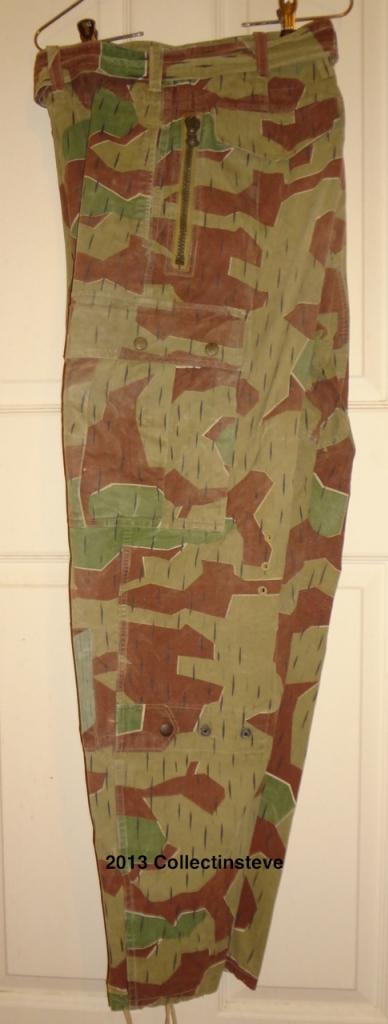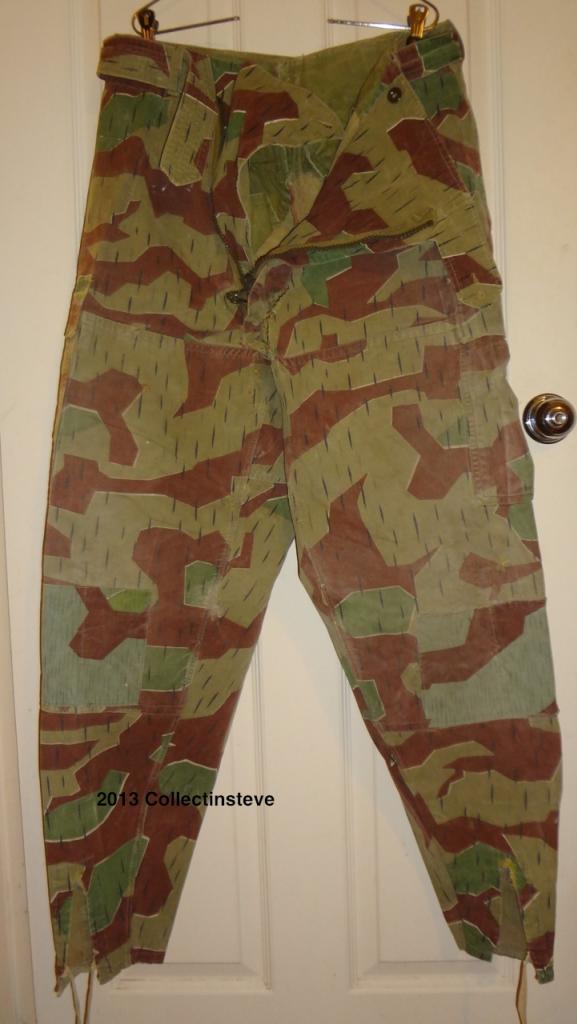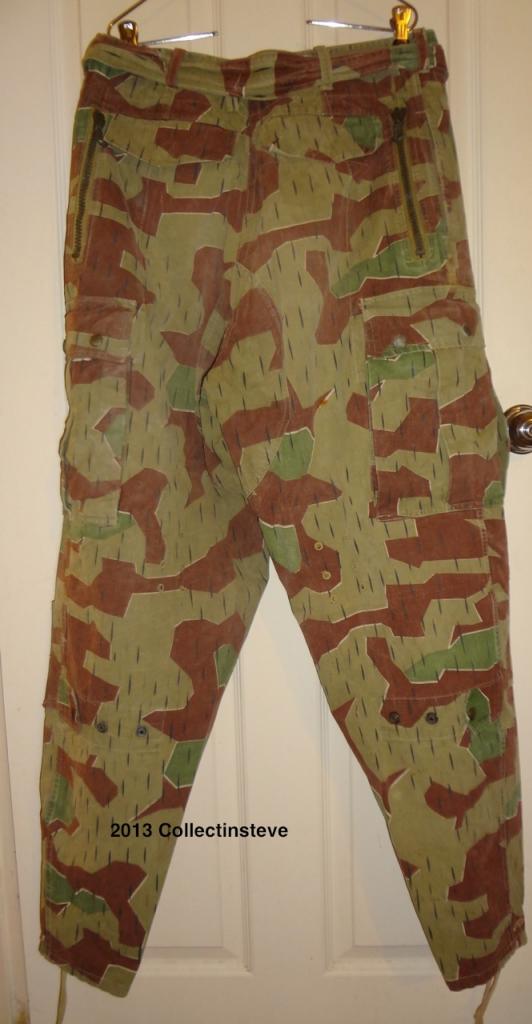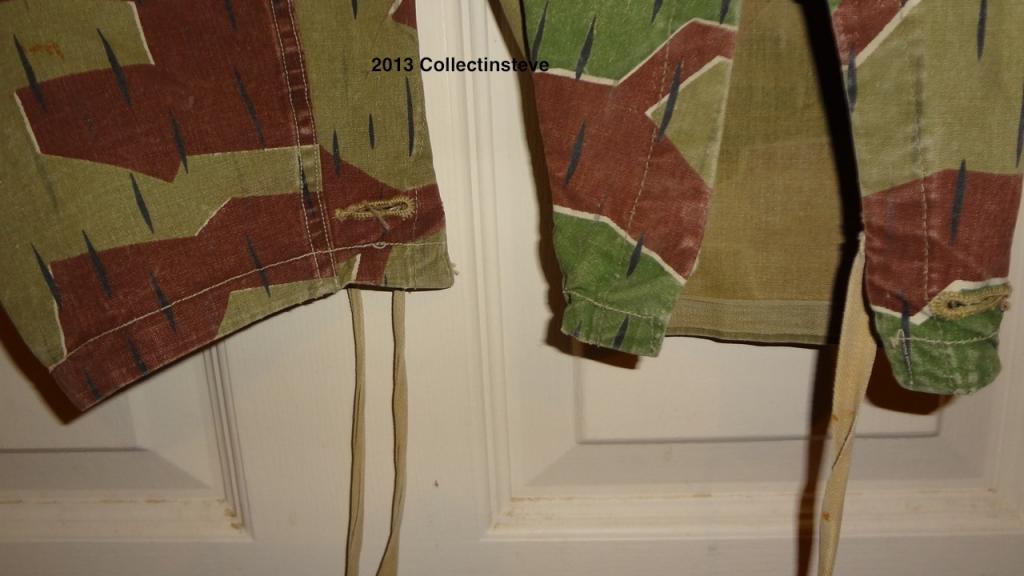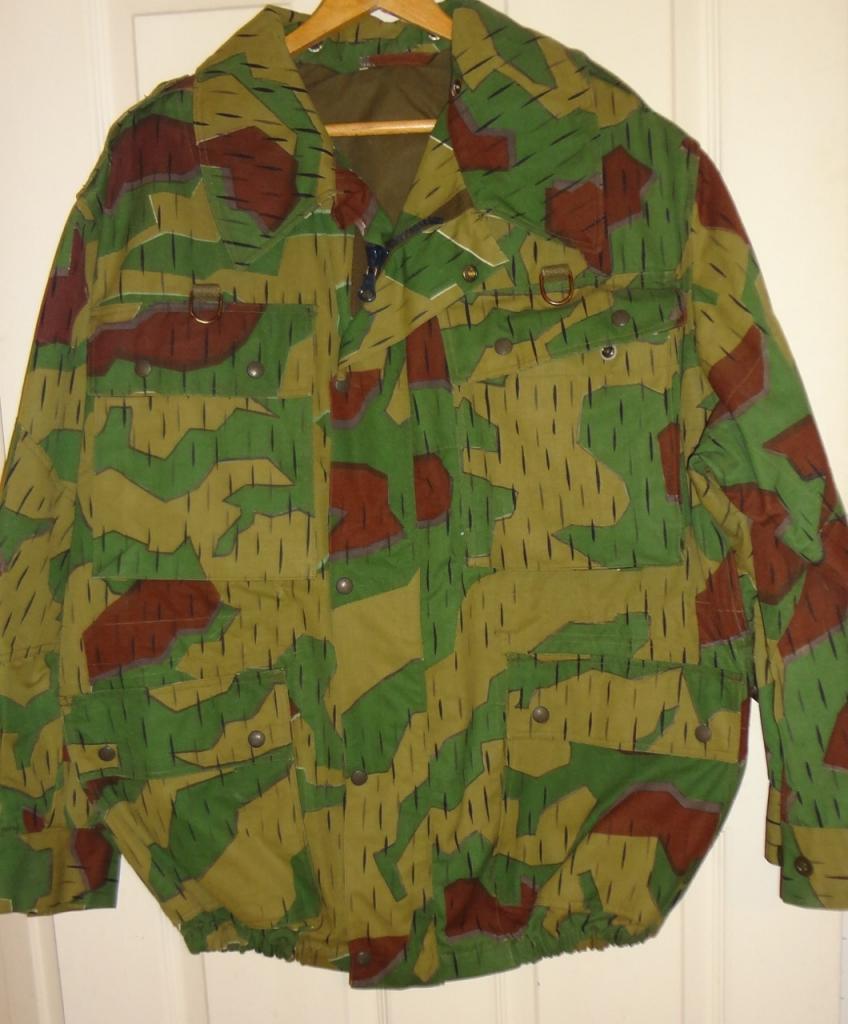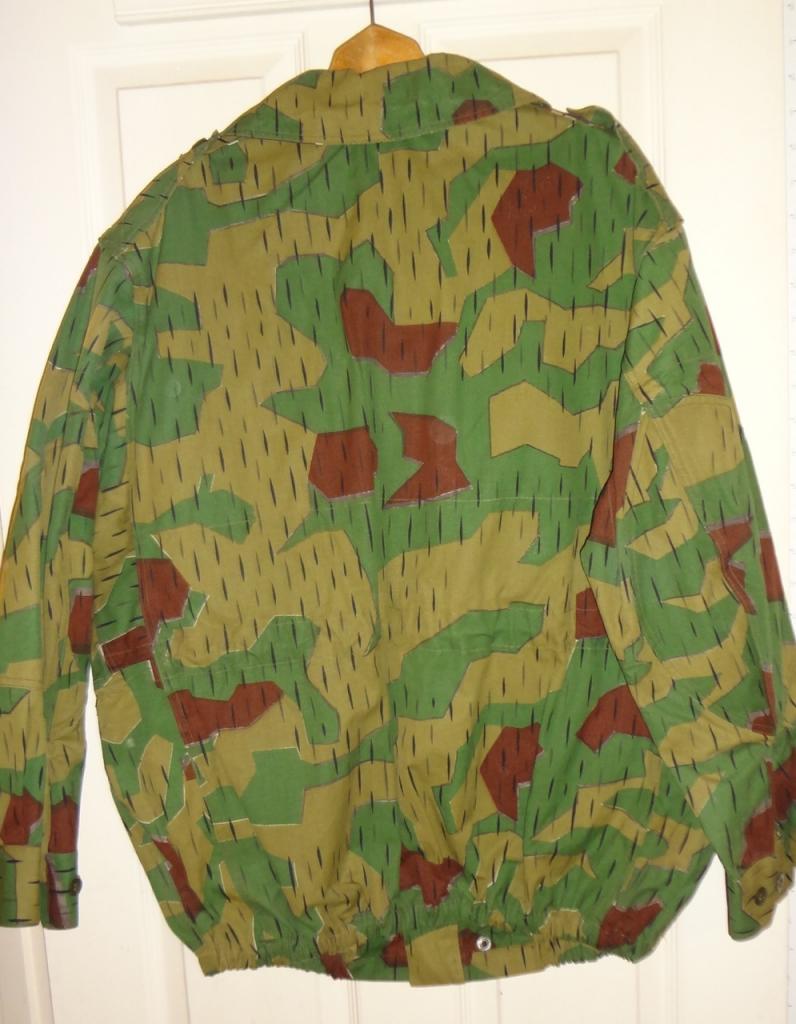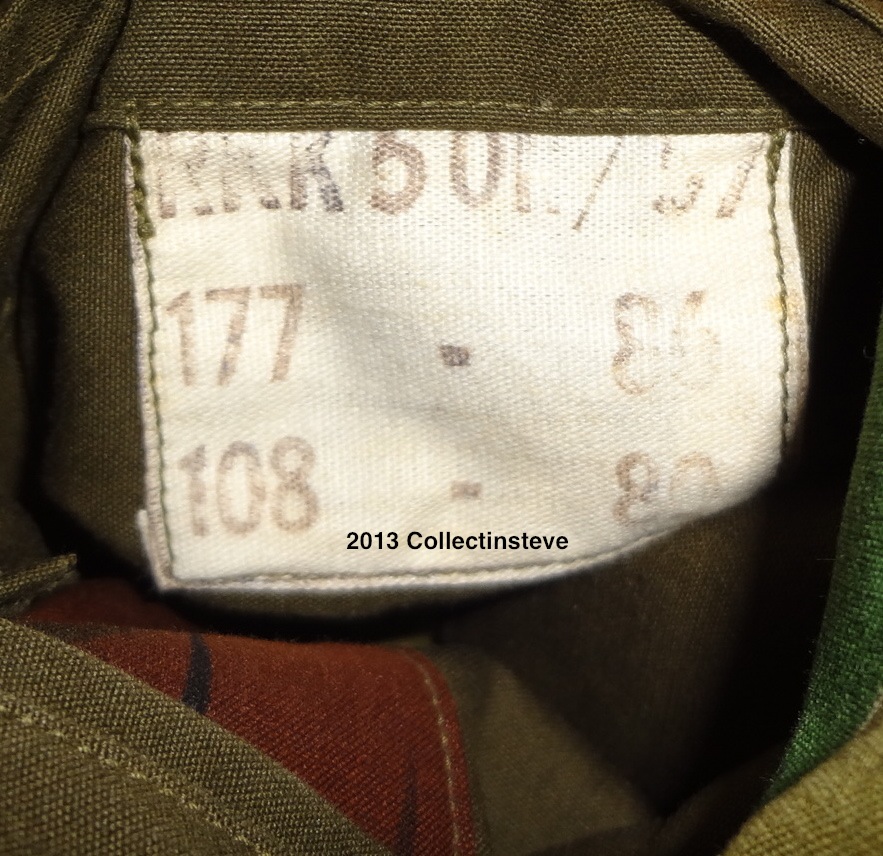A subject near and dear to my heart
Although BW Splittertarn was produced for roughly 2 years only, there were many variations. Unfortunately not much is known about them because there are few pictures of anything other than the standard infantry type in use. Even the most recent books on BW uniforms do not appear to have much new information either. Which means that most of what I'm going to present here is pieced together by me and definitely not authoritative information.
First, let us be clear about the variations in the patterns themselves, because there is not just one but 6. I have categorized them using some common collector language and some language of my own to keep things easy to compare side to side:
1. Standard Splittertarn, Wehrmacht Variant (Standard WH)
2. Standard Splittertarn, Blue Variant (Standard Blue)
3. Standard Splittertarn, Green Varient (Standard Green)
4. Broad Splittertarn, Brown Dominant (Broad Brown)
5. Broad Splittertarn, Green Dominant (Broad Green)
6. Palm Splintertarn (Palm)
The splinter shapes for all 6 patterns are the same. The differences are in color variations, which colors are used for which shapes, and the size/style of the "rain strokes". These differences are:
Standard WH = colors similar to typical Third Reich colors
Standard Blue = overall blue tint to the background color
Standard Green = overall green tint and slightly larger rain strokes
Broad Brown = large shapes brown, as above, but with large rain strokes
Broad Green = large shapes are green, large rain strokes
Palm = no rain strokes, small shapes brown, large shapes olive, background green
These patterns were all printed on a thin cotton canvas material. However, Standard Blue was also printed on a medium weight soft cotton material. I think Palm might be on soft cotton as well, but I am not positive about that.
For Standard Splinter the rain strokes are solid, for Broad Splinter the rain strokes are printed with two rollers. One roller printed the strokes in solid black, the other at about 50% black. The Palm leaves are printed the same way. This technique was used on Amöebatarn and the older Liebermuster.
As for the different uniform designs there are at least 6, perhaps more. They are:
1. Infantry (Standard WH, Standard Blue, Standard Green, Broad Green)
2. Fallschirmjäger 1st Model with small metal zippers (Standard Blue)
3. Fallschirmjäger 1st Model with large plastic zippers (Standard Green)
4. Fallschirmjäger 2nd Model with large plastic zippers (Broad Brown)
5. Luftflande (Standard Blue)
6. Gebirgsjäger (Standard Blue)
I know of nothing made in Palm, other than an experimental snow camouflage (which I'm not going to cover here) which used the palm leafs only.
There is a minor variation of the Infantry trousers. There are two sets of straps around the center of each thigh. One at the top of the pocket, one at the bottom of the poacket. They are adjusted externally to the rear of the leg pockets.
Each uniform has a snap on hood in the same pattern. Gloves were made in Standard Blue and Standard Green. I have not seen any made in the other patterns.
I am not sure if Gebirgsjäger had it's own jacket or used Infantry or Luftlande. I suspect they used standard Infantry or Luftlande, not a type unique to GJ. That is pure speculation on my part, unfortunately.
As for dating these items, I can only make an educated rough guess:
Standard WH - 1955
Standard Blue and Green - 1956 and 1957
Broad Brown and Green - 1957
Palm - 1957 or later
The FJ 1st Model, GJ, and LL uniforms were made in 1956. The soft cotton Standard Blue was made January 1956, not sure if later. Standard Blue and Green dates I've seen are February 1956 through February 1957. As far as I know I haven't seen anything outside of these dates in those patterns. Broad Green was made November 1957, Broad Green in December 1957. No idea when Plam was made, but the snow camo was made in 1960.
That's pretty much all I can think of. I will post pictures of my items in the posts that follow.
Steve



 by
by 